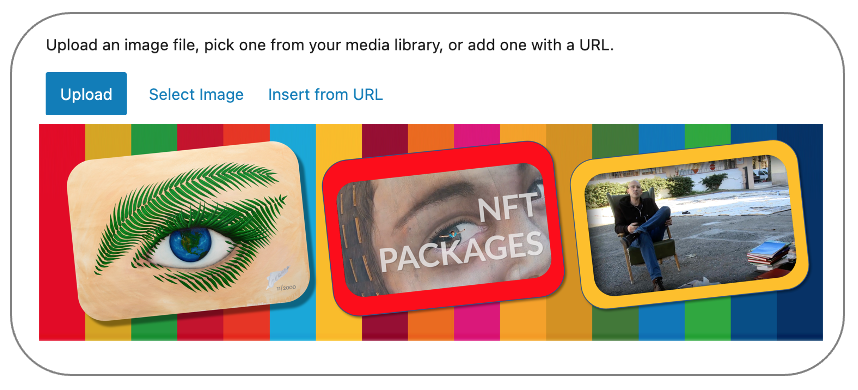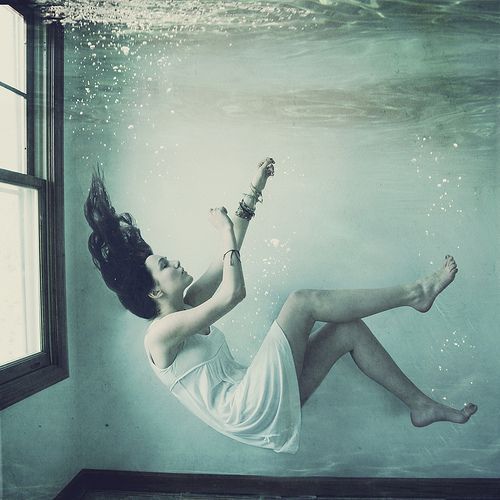
Postmodern art features juxtapositions of new and old objects and ideas. This is consistent with Fredric Jameson's American Marxist philosopher beliefs. He believed that all activity, even art creation, will be affected by our condition. This art embraces life's transient nature and questions narrative's meaning and purpose. It also highlights the importance the image. The art of the postmodern age will reflect this world in which life is constantly changing.
Accept the fleeting nature of your life
Postmodern art adheres to the principal principle of accepting the temporary nature of life. Fredric Jameson a Marxist American philosopher says this condition will manifest through all activities, including art creation. Through the juxtaposition between old and new art forms, we will celebrate the transience of human life. Postmodern art emphasizes the transience within oneself.

Questioning the narrative
Lyotard makes a distinction between narrative and scientific knowledge in The Postmodern Condition. Lyotard defines postmodernity as the dominance scientific knowledge over narrative information. Lyotard says that scientific knowledge has the potential to miss certain events and be detrimental. Narrative knowledge will capture these aspects. This distinction is crucial because narrative knowledge has much more history than scientific knowledge. This makes it more likely that narrative knowledge will have an impact on our world, than scientific knowledge.
Image is worth its weight
Modern art relies on images for its value. It's used to communicate meaning. A work's subject matter and style can have an impact on this meaning. Although they are similar in style, Rubens's The Slaughterhouse Window and Picasso's Weeping Woman have very different contents. Both paintings demonstrate the importance of the image and are excellent examples of postmodern artwork.
Impact on aesthetics
Jameson's work draws heavily on the Culture Industry thesis by Adorno, Horkheimer to show the impact of postmodern art upon aesthetics. Jameson defines postmodern aesthetics, which he describes as the fusion or capitalist systems and aesthetic production. Jameson also suggests that aesthetic production has been repositioned so that it integrates with commodity production.

Influence on pop Art
Pop art, a contemporary form of art, is an art form that emerged from the modernist movement. This art can often be seen as a precursor of more contemporary forms. Pop artists made everyday objects of consumerism more appealing by creating soft forms. This helped to make these objects cultural icons. Minimalism was another popular trend that inspired artists creating repetitive, industrial-looking pieces. Many artists began to see popular culture as a medium and subject, which led to the shift from abstract art to social criticism.
FAQ
How did pop culture develop?
Technology was the driver behind the growth of popular culture. As people became more mobile, it developed. The invention of the radio enabled mass communication. This led to the rise of television which then gave birth to the internet.
People started using computers at home and were exposed to computer games. These games were played on consoles like the Nintendo Wii and Sony Playstation 3. These games can be downloaded online for free. Many people are choosing to play video games over watching TV.
Video games are very popular with children and teenagers. They can be played alone or with friends via the internet. Games like Call Of Duty and Grand Theft Auto are extremely violent. Some parents are worried about their children playing these video games. Others find it interesting to see what happens if a character dies.
Music videos are another way youth can be influenced by pop culture. They feature celebrities and information about current trends. They are loved by young people. There's no doubt about it: music plays a big part in our lives!
Many artists use special effects in music videos to enhance their songs. For example, rappers wear wigs and makeup to look more attractive. Some musicians have to go through extreme physical and mental challenges in order show their bodies. Many singers sing in costumes.
Music is available in a wide variety of formats today. You can listen to whatever you like. This is not always good news. Sometimes music can encourage violence. Some lyrics or words can cause people to get mad. Sometimes they even commit crime.
50 Cent is a recent example of this. His song Get Rich Or Die Trying features a line: "I'm going to shoot a motherfucker down / I don't know why but I just might." When someone heard this song, they thought it meant that he would kill someone. A man called him up and threatened him. 50 Cent updated the lyrics. Now, it says "I'll shot a bitch down/I don't know how but I might."
Popular culture is essential. It is important to learn how it affects you. If we don’t know how it affects our lives, we won’t have the ability to protect ourselves from its negative consequences.
Why pop music is popular?
Pop music is fun because it is entertaining! Pop music makes you feel happy, and it gives you a lot of freedom. People listen to pop music and can think about nothing but themselves. They don't have worry about what people think. Pop music is so beloved because of this. People love to listen to songs that are positive and upbeat. Turn on the radio to hear upbeat music if you're feeling low. You may even find yourself singing along. Pop music is a success because of this.
What is popular music culture?
Popular music culture is a dynamic phenomenon that can take many forms.
Popular music culture is defined by its use of certain styles of music (e.g., rock, jazz) and lyrics. It also includes the influence of visual media (e.g., film, television and fashion) on artists' careers.
It's also about the way fans interact with their favorite artists.
Popular music culture has one element: the rise of "superstars", artists who have gained fame and fortune.
These icons transcend many genres and have become cultural icons. Their popularity has also influenced the development of popular music.
Other elements of popular culture in music include:
* The rise of recording technology - from acoustic instruments to electric guitars and microphones;
* The invention of record players and radios;
* The dawn of rock 'n' roll;
* Introduction of film and TV;
* The birth MTV and VH1
* The creation and use of the internet.
What are some positive elements of pop culture
Pop culture can be good. It gives people something to discuss. It also allows people to express their creativity. Pop culture can be used by artists to promote their works.
Pop culture brings people closer together, which I believe is the best part. Everyone wants to watch the same shows. Everyone likes the same music. Everyone enjoys the same films. Pop culture allows people to connect.
Pop culture can be unhealthy. Some films glorify violence, for example. Some television programs make fun at people with mental disorders. And some bands encourage fans to do drugs.
So, what can we do with pop culture's negative side?
We should try not to allow pop culture to influence us. It should not influence us. It can pose a threat to our health. It can even lead to criminal activity. It can even cause problems in our relationships.
We need to consider whether pop culture is helping society or hurting it. Is pop culture promoting good values or negative ones? Are people being influenced into doing bad things?
Let's not forget to ask ourselves if our world is fulfilling. What music do you like? What do we like about the TV shows we watch The clothes we wear
If we care about our future, we must take responsibility for our actions. Decide what kind of world you want. We can then choose the right pop culture.
How did pop music become popular?
It was an accident. The mistake that caused the first song to be written was when someone accidentally knocked a piano over while playing on New Years Eve 1920.
The recording company loved the music and decided to make it a single.
This was the first ever single to become a hit.
Since then, pop music has become the most popular form of musical entertainment today.
Is Tik Tok pop-culture?
The answer is yes It's not just for teenagers anymore. These videos can be used by anyone to express their feelings, share life moments, and show support.
More than 200 million people use the app every day all over the globe. And this number grows by millions each day.
TikTok provides a fantastic opportunity for brands and consumers to build meaningful relationships.
Many influencers have established huge followings on TikTok. These creators produce original content that engages people around the world.
So, what are you waiting? These are the four best ways to profit from this trend.
-
Make viral content
-
Engage Influencers
-
Use Visuals Effectively
-
Get creative with your audience
What does pop culture teach us?
Our society today places more importance on material goods than all other things. This is especially true with young people. They spend hours a day staring at screens. They look at screens and watch videos, as well as play video games and surf the Internet. All of these distract them from the task at hand, which is to complete school work. This causes them to fail classes.
The world we live in is one where everyone wants the same thing. That means being popular. Popularity depends on money, clothes, and other possessions. This makes it easy for some people to do wrong.
Technology has made us too dependent. Technology has given us access to all kinds of information. However, not all information is accurate. False rumors are floating around the Internet. These rumors spread fast because people share them on social networking sites. It's easy for people to post things without checking if they are true.
People have lost their ability for critical thinking. They trust everything they read online. They believe what they see on TV and in magazines. They stop thinking for their own sake. Instead, they follow the crowd.
When we rely on others to tell us what's happening, we lose control over our lives. Pop culture teaches you to depend on others. It also makes us lazy. While the truth is often out there, we don't always know it.
Statistics
- Less than a decade later, that statistic rose to 90% (Dager, n.d.). (socialsci.libretexts.org)
- In 1987, US films captured 56% of the European film market. (socialsci.libretexts.org)
- Yet a Nielsen study shows they account for 42% of the country's most-watched content on streaming services. courtesy Nielsen (npr.org)
- According to Kathryn Sorrells (2013, pp. 142-144), there are several ways that we can become informed consumers of popular culture. (socialsci.libretexts.org)
- According to Dictionary.com, popular culture, or low culture as it is sometimes referred to is comprised of the “cultural activities or commercial products reflecting, suited to, or aimed at the tastes of the general masses of people” (7/21/19). (socialsci.libretexts.org)
External Links
How To
What is pop culture in films?
Popular Movies Culture encompasses all aspects Entertainment - books, magazines newspapers, television programs and websites.
Movies can be classified into different types: comedy/drama, horror, action/adventure. Fantasy, science fiction. Romance, thriller. Animation.
Movie plots usually follow a predictable sequence of events that leads to a satisfying ending.
A movie's success will depend on how well it follows this formula.
Some common plot points include:
-
A protagonist who must overcome obstacles to achieve his/her goal;
-
An antagonist who opposes the protagonist throughout the film;
-
A moral dilemma that requires the protagonist to make a decision;
-
It's a twist ending that will change everything
If your story doesn't fit into one of these categories, you may need to reevaluate your concept or outline before you begin writing.
Pay attention to these questions:
-
How do I establish my setting?
-
What is my protagonist looking for?
-
Why should readers care what my story is about?
-
Where is my story going now?
-
Who is my main protagonist?
-
What about conflict?
-
What is the climax?
-
What is my resolution?
-
Is it happy or sad that the ending is here?
-
Do I introduce new characters?
-
Does my story feature multiple settings?
-
Are there subplots?
-
Are there any major themes?
-
Can I tell a complete book in one chapter?
-
How effective am I using dialog?
-
Is it clear and concise in my language?
-
Is my vocabulary appropriate to the context?
-
Have I used an active voice over a passive one?
-
Are there spelling errors?
-
Is my grammar correct?
-
Are there too many adverbs
-
Do you have any suggestions?
-
When I'm done editing, what is my first impression?
Your job is to not only create a book that's good, but to also get it published.